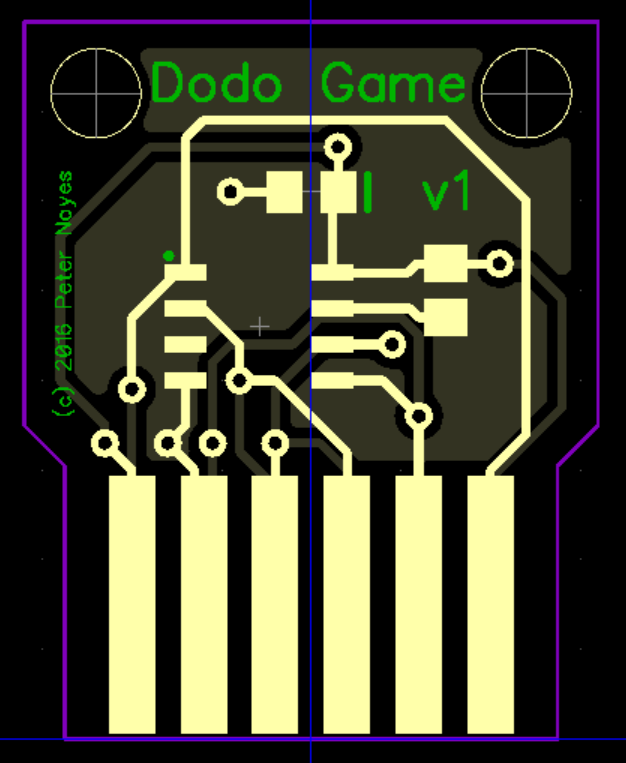After developing a proof of concept that swappable game cartridges are possible, the trigger has been pulled on printing boards. The board houses the SPI FRAM chip and is designed to be inserted into a card edge connector, specifically the 7-5530843-6 from TE. I only need 6 pins in total. An edge connector with so few pins is not readily available so I decided to go with a 12 position edge connector and make the cartridge reversible.

 Peter Noyes
Peter Noyes
Discussions
Become a Hackaday.io Member
Create an account to leave a comment. Already have an account? Log In.
Thanks! I only went this route because I didn't think to expose the address/data buses on my board. I moved the complexity to software because the game code needs to be copied into ram, it can't be run straight over SPI. It also means there is less ram available.
Are you sure? yes | no
This means that our consoles each have different limitations and advantages. You're console has slow loading times, but can run code faster since it's in the RAM. The hardware complexity is also less, making it less expensive, but they require more code to operate. You also have the capability of making the cartridges have virtually infinite capacity.
My console can have instant load times since the code is always visible to the CPU, but since flash chips are slower, the code could be slower if you don't copy it to RAM first, or use faster but more expensive chips. My game capacity is limited to 4 MB without modifying the cartridge. My cartridge complexity makes it more expensive to make ($15 per cartridge).
I guess our consoles are pretty balanced.
BTW, with a little redesign you COULD run straight from SPI, but that would make things terribly slow, and who would want that?
I'm very interested in this console, keep it up!
Are you sure? yes | no
Wow. This is a lot less complex than my cartridge. Why I didn't use SPI, I have no idea.
Are you sure? yes | no